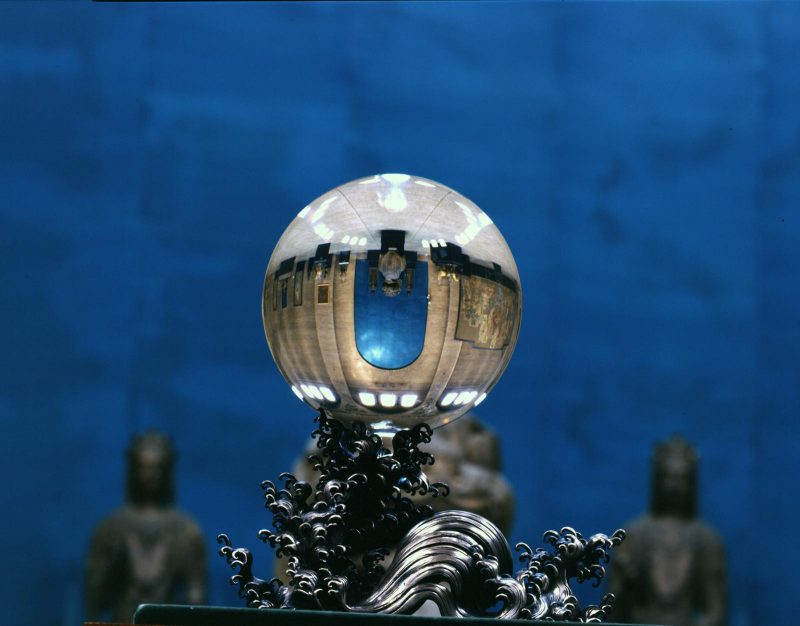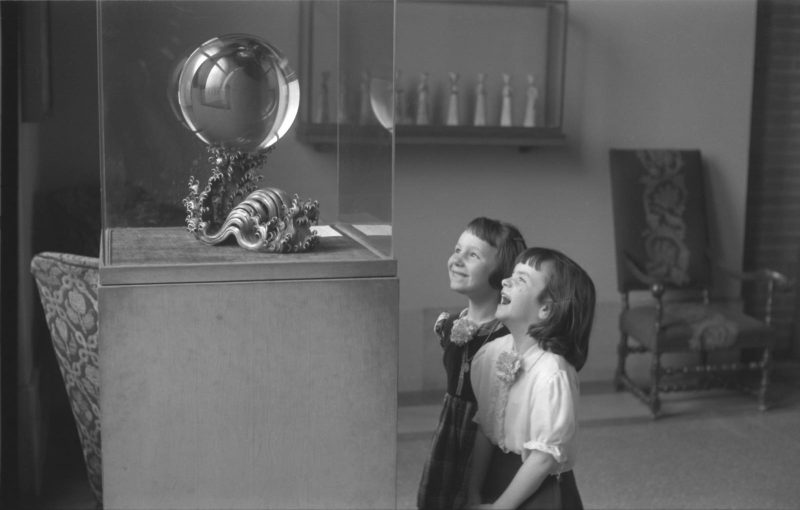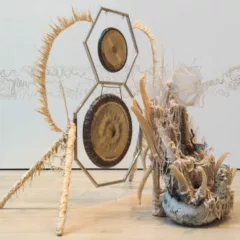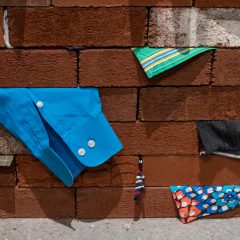The third largest crystal ball in the world is perfectly round and roughly the size of my own head.
It first belonged, it is said, to Qing dynasty Empress Cixi (1835 – 1908). Sometime after her death — we don’t know how — it ended up in the antiques section of Wanamaker’s, Philadelphia’s first department store, housed in the Center City building currently occupied by Macy’s. In 1927, it caught the eye of a museum benefactor, who bought it and donated it to the Penn Museum.
It was stationary for a while. Then, in 1988, it disappeared.

The globe was stolen from the museum along with a bronze statuette of Osiris, which was probably used to smash the display case. (So one art object was made into a tool to aid in stealing another. Like cutting a Miro out of its frame to wrap up a Calder). It stayed missing for several years, until the Osiris turned up in a thrift shop on South Street. The store had bought it from a character named Al the Trash Picker, and through him the globe was traced to a New Jersey occult enthusiast who had been given it as a gift. From a museum blog post based on a lecture by senior archivist Alessandro Pezzati:
She had originally placed the Crystal Ball in her window; however, after light passing through the crystal nearly burned her arm, she moved it away from direct light and her husband then began to use the imperial crystal as a hat stand.
The original thief remains unknown.
When I read about the bizarre paths that art objects take once stolen from a gallery – like the Renoir taken from the Baltimore Museum of Art in 1951 that reemerged sixty years later, at a West Virginia flea market, in a box containing a Paul Bunyan doll and a plastic cow— I think how little art history can offer an understanding of what has happened when the stolen thing was somewhere we’ll never know. It’s different from when an art object is in storage; that’s when it’s resting. But when there are these gaps in the thing’s history, it seems to have more in common with the rendering of an object in a fantasy world, like Tolkien’s ring — dormant for a time, then drawing people to it, not so much sleeping as hitchhiking out of one narrative realm and into the next.
Since its brief stint under a hat in New Jersey, the crystal ball has returned to its place in the center of the museum’s Harrison Rotunda. The space — a 90-foot-high dome with a 90-foot diameter — predates the first arrival of the globe, but its architecture seems made to display it. The windows ringing the crest of the dome are reflected as blocks of brilliant white on every side of the ball.
It rests on a silver stand, made in Japan, within a glass case. The case rests on a wooden pedestal, elevating the globe to approximate face level. A railing goes around the pedestal.
This is typical of a museum: displayed so that you can see it best and touch it least.
The day I visit there is a school group in the gallery. The school kids are at a cusp-age, their heights varying by feet. The teacher is taking a photo of a kid in a finger splint gesturing at the ball, proffering it.
The kids are leaning against the wooden base. They’re using it as a hard surface to write against until the teacher calls them to back away a foot, her voice taught with urgency. I envy them a little — they have not yet learned that art is anything you’re not allowed to touch.

It was formed through touch, through a slow abrasion, by turning a chunk of quartz in a trough of sand and water until it became a sphere.
It is totally translucent, unique for the total absence of any imperfections in the quartz.
I keep circling to find a seam: but the only seams are the four edges of the display case reflected in the curving sides of the ball.
It should be like a pane of glass, it should not seem to act upon the stuff visible through its surface. But what I see inside the quartz, the vista on the other side of this super translucent material, becomes matte in its interior. The stuff inside has a Vermeer-like quality – the lights and darks seem exaggerated in a way that makes them feel more real than the world outside the globe. It seems not to contain but to generate an image with such potence the VR of the VR headset pales in comparison.
The optics of the globe: it takes the image and flips if left to right and upside down. This means the pastel backdrops of the buddhas on the outer perimeter of the gallery, the visitors approaching the ball on the other side from where I am looking at it are walking towards me upside down.
It is the inverse image of everything I own.
It has no buttons, no pixels, no pages, no substrate — no speakers, leaves, or labels.
It is exactly one material from exactly one place.
It appears the same from every angle, it has no front or back or inside or out, it is only one thing.
This pen and this paper – even my most analog possessions – I have no idea the stuff that’s in them, I can’t picture what kind of machine or assembly line put them out into the world.
For every zillion disposable and flashing screens made to break within the year, a single object. Years, water, the constant twisting motion of the maker’s hand.
And yet, even as our attention spans shrink, this thing captivates like no handheld screen.
No tools, I am still trying to imagine, no interns, no Instagram presence, just a vessel of sand and water like a little model of the world.









